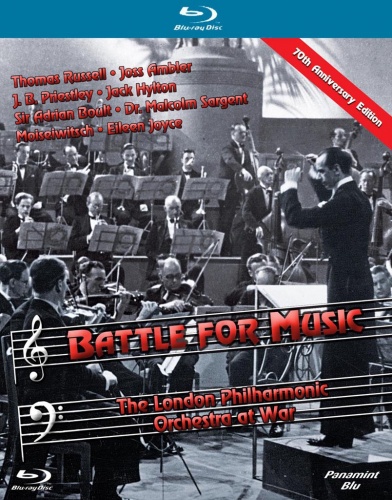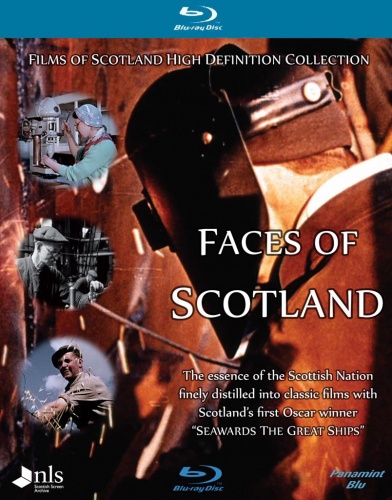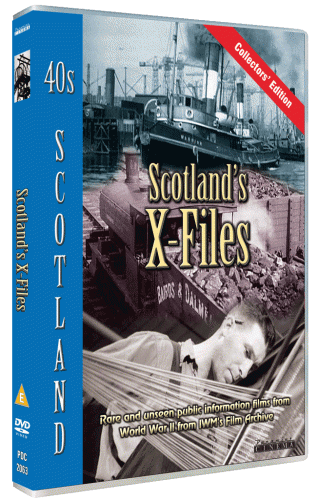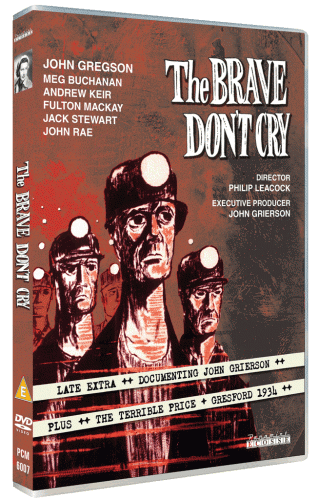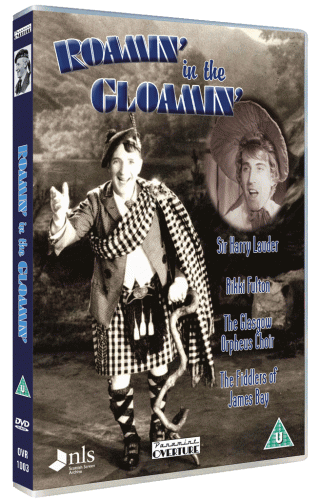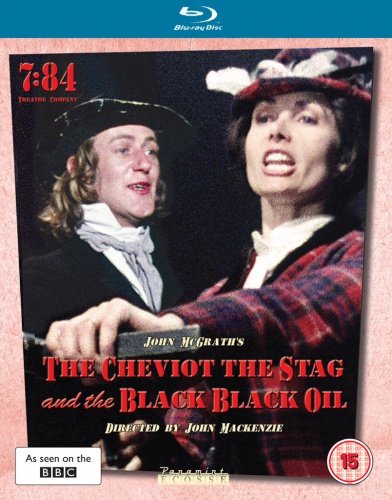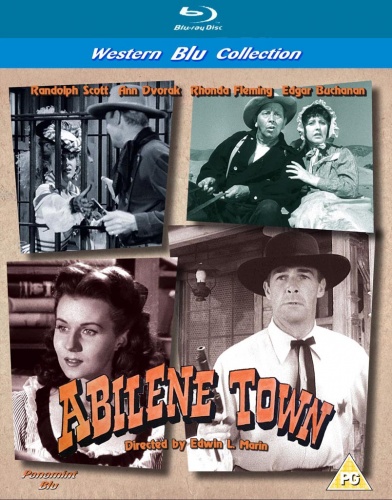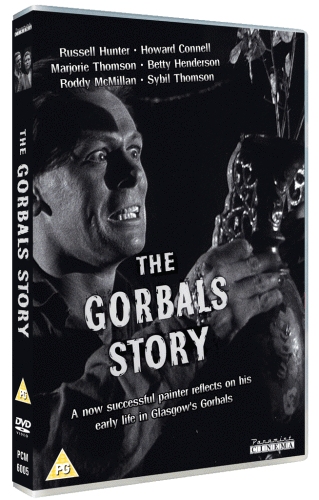Battle for Music. As the curtain fell under the shadow of war at the end of a wonderful season at Covent Garden, the London Philharmonic Orchestra faced up to voluntary liquidation. At a liquidation meeting held at the Holborn Restaurant in September 1939, a fortnight after the outbreak of war, Sir Thomas Beecham explained that there was no funding to pay the players’ fees or creditors, but the players, led by Thomas Russell, pledged to keep the Orchestra together and manage it themselves. With the blessing of Sir Thomas, the musicians formed a new company with themselves as shareholders and elected a Board of Directors. Viola player Thomas Russell became Secretary and Business Manager of the new company and they resolved to promote the Orchestra themselves and to seek their own engagements. I first learned about this film from archivist David Meeker who had worked with the British Film Institute. |
Blog
| Faces of Scotland. Faces of Scotland was the very first Blu-ray to be released by a Scottish company. Nine classic Scottish documentaries. All meticulously restored and transferred in high definition Blu-ray for stunning picture and sound quality. Almost three and a half hours of classic cinema. |
40s Scotland: Propaganda and Public Information Films. The 1940s was a heyday for documentary film making, with many industrial film units, including those of Shell, BP, and ICI offering their servcies to the Ministry of Information and other government departments. Relatively few were made in Scotland and Panamint Cinema has published almost all of them in various DVD collections. |
| The Brave Don't Cry (1952), a reconstruction of the mining disaster at Knockshinnoch Castle Colliery Ayrshire in 1950, dramatises the tense events of the rescue of miners trapped underground after a pit shaft was flooded and nine men were lost. In September 1950, the walls of Knockshinnoch Castle Colliery cave in under a sudden surge of water, trapping 118 men underground. The only escape route is through a series of abandoned tunnels filled with toxic gas. Without enough time to pump out the gas, a dangerous rescue plan is formed by mine inspector John Cameron (John Gregson) and miner's wife Margaret Wishart (Meg Buchanan). With limited breathing equipment on hand, the miners must make their way up to the surface three at a time. The film features actors from the Glasgow Citizen's Theatre. The film was premiered under its new title at the Edinburgh Film Festival in August 1952, and also shown at the Venice Film Festival that year. |
A selection of titles featuring music from Scotland. From the world's first popular music star, Sir Harry Lauder, to contemporary musicians at the Shetland Folk Festival! |
| The question “Who owns the land?” lies at the heart of writer John McGrath’s classic 1973 play The Cheviot, the Stag and the Black, Black Oil. But to appreciate the remarkable sense of political power and urgency with which this work poses that query, we might also ask ourselves who or what owns the play. After all, the cast of director John Mackenzie’s 1974 BBC TV adaptation includes both professional actors and hourly-paid oil riggers; historical reconstruction rubs shoulders with contemporary documentary interview; human tragedy and brutality alternates with music hall vitality and hilarity; a performance that talks about the past also has a lot to say about the present. At the levels of content and form alike, The Cheviot has a strong claim to be the most provocative, intelligent and enjoyable screen representation of post-1746 Highland history ever made. |
| Many years ago I purchased from the United States a VHS video starring my favourite Western actor Randolph Scott. The title was Abilene Town, made in 1946, but sadly the picture quality was very poor, scratched, dark and worn, probably from a 16 mm library print, but the performances of Scott and his co-star, another childhood favourite Rhonda Fleming in her first Western, were brilliant. After some research I discovered that the producing company, Jules Levey had closed down in the late 1940s. More research uncovered the original camera negatives and I had a high definition transfer produced from a 35 mm fine grain print made from these negatives. |
As Britain entered the Second World War, film was an essential way of maintaining public morale and keeping the public informed about the progress in the war and The GPO Film Unit became the Crown Film Unit in 1940. Many other commercial film units including The Shell Film Unit, Paul Rotha Productions and BP turned their cameras to the war effort and countless "propaganda" films were produced for cinema release. Scotland's X-Files is a compilation of rare films made in Scotland, culled from the Imperial War Museums Film Archives, presented with subtitles, and on DVD for the very first time. |
The Brave Don't Cry (1952), a reconstruction of the mining disaster at Knockshinnoch Castle Colliery Ayrshire in 1950, dramatises the tense events of the rescue of miners trapped underground after a pit shaft was flooded and nine men were lost. In September 1950, the walls of Knockshinnoch Castle Colliery cave in under a sudden surge of water, trapping 118 men underground. The only escape route is through a series of abandoned tunnels filled with toxic gas. Without enough time to pump out the gas, a dangerous rescue plan is formed by mine inspector John Cameron (John Gregson) and miner's wife Margaret Wishart (Meg Buchanan). With limited breathing equipment on hand, the miners must make their way up to the surface three at a time. The film features actors from the Glasgow Citizen's Theatre. The film was premiered under its new title at the Edinburgh Film Festival in August 1952, and also shown at the Venice Film Festival that year. |
| In 1949, when The Gorbals Story was filmed, cinema audiences were familiar with Scotland as a land of history and romance, with wild landscapes, populated by wilder natives, who talked in some unintelligible, often comic dialect, and by dashing heroes and beautiful heroines, who spoke with reassuringly cut-glass English accents. David Niven had wrapped himself in tartan the previous year as Bonnie Prince Charlie. Brigadoon was a hit on Broadway and the London West End and a film version would soon be delighting audiences around the world. The Gorbals Story presented a very different image of Scotland. It was set not in the heathery Highlands or misty Islands, but in the slums of Glasgow. Its characters were not Jacobite princes or young romantics seeking love and a simpler way of life, and liquor was not merely a comic plot device. Its characters were the men and the women packed together in the teeming tenements just south of the Clyde, sharing their living space with rats whose presence in the bed may offer some warmth on a cold night, according to one character. |
